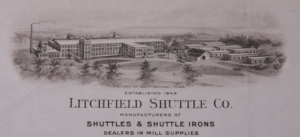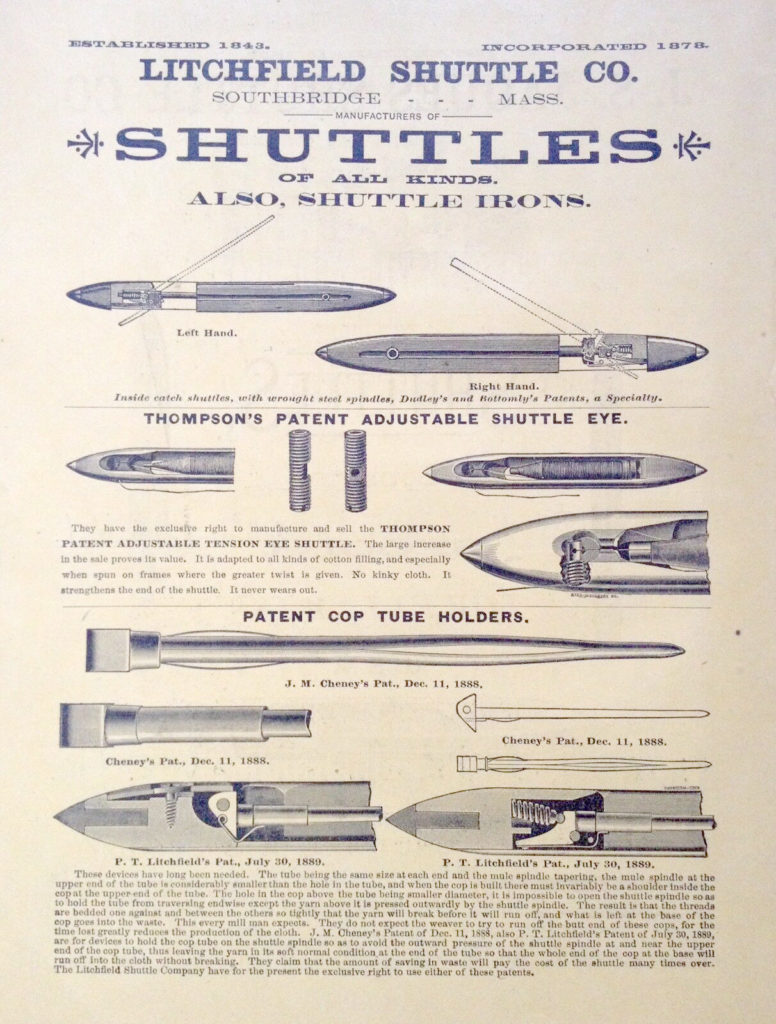THE SHUTTLE MOUNTAIN WAGON
Answer
If you are a reader of Tom Marshall’s writings, you may remember Tom writing that when the Mountain Wagon arrived at Auburn Heights, it came with angled side boards and had been used to haul logs out of New Hampshire. During Auburn Heights tours, we often mention that the Mountain Wagon started life as a lumber vehicle in New England.
 Litchfield Shuttle Company was founded in 1843 by Pliny, Festus C., and Leroy Litchfield for the manufacture of loom shuttles! Initially known as the L.O.P. Litchfield and Company, in 1878 the company was granted incorporation under Massachusetts law as the Litchfield Shuttle Company. The initial capital investment was $21,000, and by the start of the 1900s, Litchfield had become the largest shuttle and shuttle-iron manufacturer in the country. Litchfield made shuttles for weaving cotton, wool, silk, linen and jute, along with bobbins. With changing weaving technologies, wooden shuttles were no longer in demand, and the company closed down in the early 1950s after the factory contents were sold at auction.
Litchfield Shuttle Company was founded in 1843 by Pliny, Festus C., and Leroy Litchfield for the manufacture of loom shuttles! Initially known as the L.O.P. Litchfield and Company, in 1878 the company was granted incorporation under Massachusetts law as the Litchfield Shuttle Company. The initial capital investment was $21,000, and by the start of the 1900s, Litchfield had become the largest shuttle and shuttle-iron manufacturer in the country. Litchfield made shuttles for weaving cotton, wool, silk, linen and jute, along with bobbins. With changing weaving technologies, wooden shuttles were no longer in demand, and the company closed down in the early 1950s after the factory contents were sold at auction.
 According to company history from the Quinabaug Historical Society, Litchfield initially made shuttles from Persimmon Wood due to its hardness. The company eventually changed to Dogwood before settling on Applewood for its superior hardness, tight grain, and ease of machining qualities for making shuttles. There are references to combing the New England states for quality Applewood that would be sorted through and premium prices paid.
According to company history from the Quinabaug Historical Society, Litchfield initially made shuttles from Persimmon Wood due to its hardness. The company eventually changed to Dogwood before settling on Applewood for its superior hardness, tight grain, and ease of machining qualities for making shuttles. There are references to combing the New England states for quality Applewood that would be sorted through and premium prices paid.
Litchfield might have used the Mountain Wagon for hauling high-quality Applewood to their plant in Southbridge, Massachusetts. Additionally, one can envision the Mountain Wagon loaded with wooden crates of finished shuttles being taken to the railroad station for shipment a short distance from the factory.
